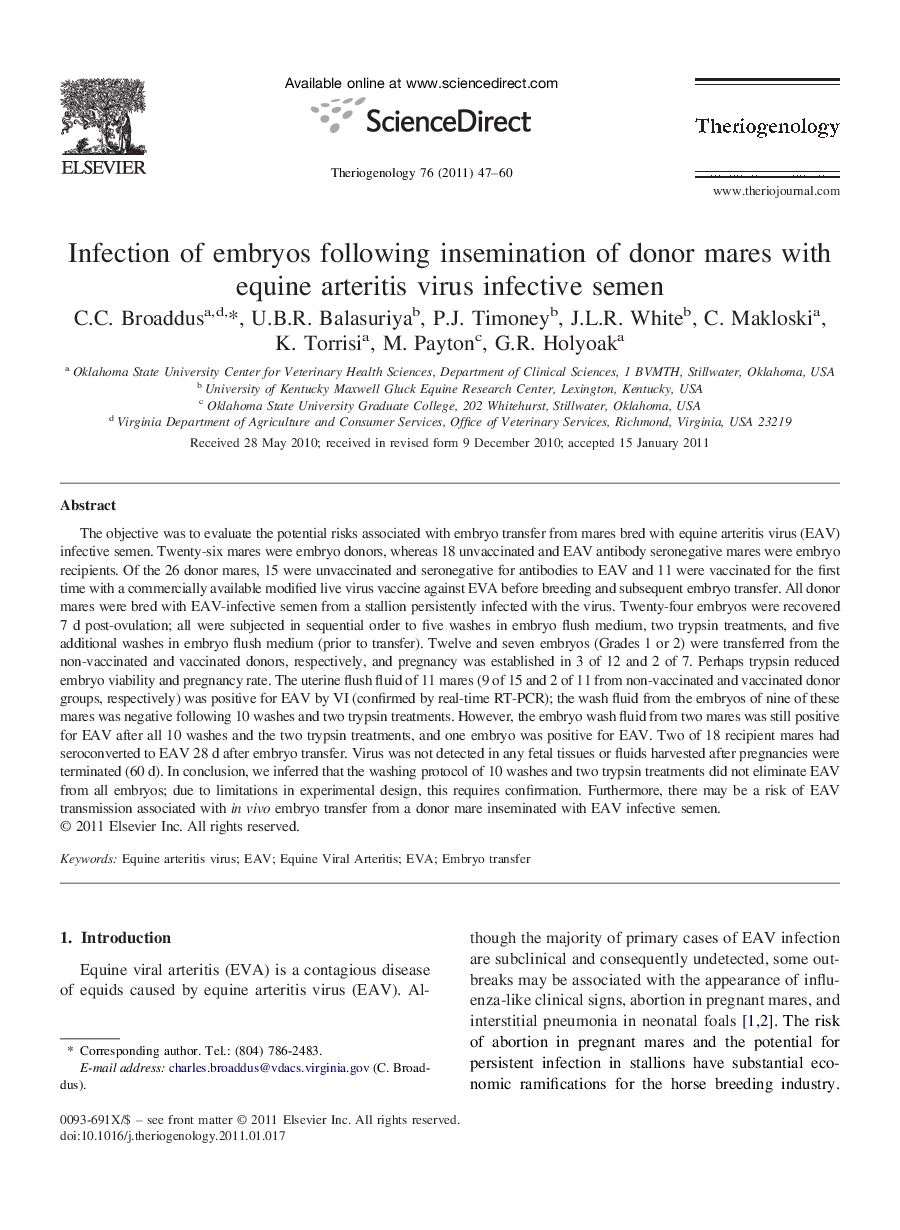| کد مقاله | کد نشریه | سال انتشار | مقاله انگلیسی | نسخه تمام متن |
|---|---|---|---|---|
| 2095548 | 1082126 | 2011 | 14 صفحه PDF | دانلود رایگان |

The objective was to evaluate the potential risks associated with embryo transfer from mares bred with equine arteritis virus (EAV) infective semen. Twenty-six mares were embryo donors, whereas 18 unvaccinated and EAV antibody seronegative mares were embryo recipients. Of the 26 donor mares, 15 were unvaccinated and seronegative for antibodies to EAV and 11 were vaccinated for the first time with a commercially available modified live virus vaccine against EVA before breeding and subsequent embryo transfer. All donor mares were bred with EAV-infective semen from a stallion persistently infected with the virus. Twenty-four embryos were recovered 7 d post-ovulation; all were subjected in sequential order to five washes in embryo flush medium, two trypsin treatments, and five additional washes in embryo flush medium (prior to transfer). Twelve and seven embryos (Grades 1 or 2) were transferred from the non-vaccinated and vaccinated donors, respectively, and pregnancy was established in 3 of 12 and 2 of 7. Perhaps trypsin reduced embryo viability and pregnancy rate. The uterine flush fluid of 11 mares (9 of 15 and 2 of 11 from non-vaccinated and vaccinated donor groups, respectively) was positive for EAV by VI (confirmed by real-time RT-PCR); the wash fluid from the embryos of nine of these mares was negative following 10 washes and two trypsin treatments. However, the embryo wash fluid from two mares was still positive for EAV after all 10 washes and the two trypsin treatments, and one embryo was positive for EAV. Two of 18 recipient mares had seroconverted to EAV 28 d after embryo transfer. Virus was not detected in any fetal tissues or fluids harvested after pregnancies were terminated (60 d). In conclusion, we inferred that the washing protocol of 10 washes and two trypsin treatments did not eliminate EAV from all embryos; due to limitations in experimental design, this requires confirmation. Furthermore, there may be a risk of EAV transmission associated with in vivo embryo transfer from a donor mare inseminated with EAV infective semen.
Journal: Theriogenology - Volume 76, Issue 1, 1 July 2011, Pages 47–60